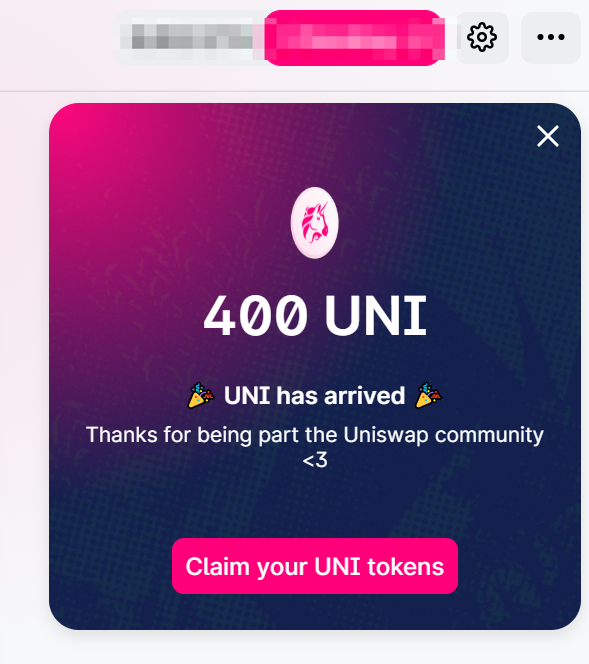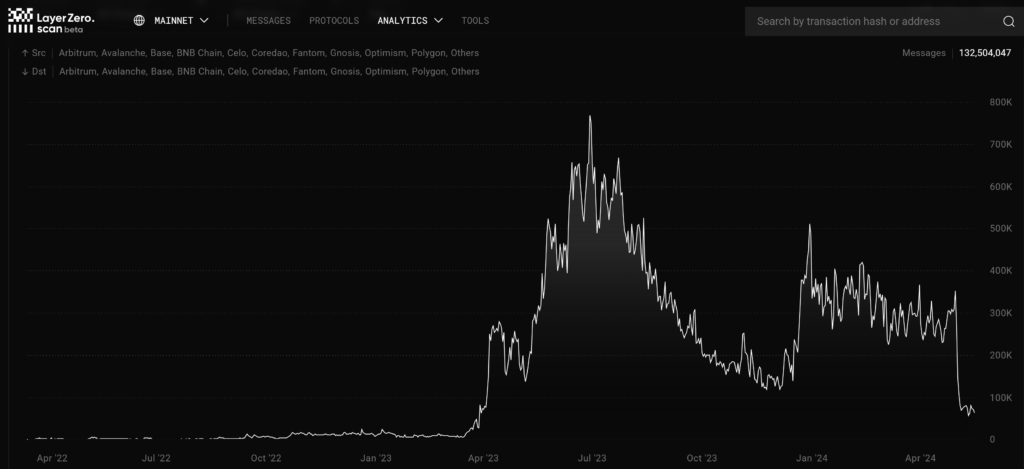The Normalization of Crypto Airdrops: Bubble or Path to Value Discovery?
Airdrops have always been one of the hottest topics in the cryptocurrency space. Initially, the concept of airdrops was simply about protocols rewarding users with “free money”, but it quickly evolved into a very complex system involving points, overvalued venture-backed projects, and uncertain returns. This article will trace the origins, development, and potential future opportunities of airdrops.
Simply put, an airdrop refers to a protocol retroactively rewarding its platform users with its native tokens.
The First Major Airdrop
The first major airdrop was conducted by Uniswap in 2021, when they distributed 400 UNI tokens to users who had previously swapped tokens on their exchange. This was unprecedented at the time, rewarding users with thousands of dollars for a simple transaction.

Their rationale was that the UNI token needed to be decentralized to allow the DAO to function as intended, and it also prevented the token from being deemed a security by regulators due to excessive centralization. It also rewarded users who had previously contributed to the protocol—after all, without users, a protocol is lifeless.
Subsequent Airdrops
During the following years of the bear market, a few more airdrops were conducted by Ethereum Name Service (ENS) and Optimism, though on a smaller scale. However, after Optimism, users began to realize how easy it was to use multiple wallets to qualify for airdrops and receive thousands of tokens in return.
The New Era of Airdrops
The first large-scale airdrop of this new era came from Arbitrum in the spring of 2023, distributing ARB tokens to all users who had used their L2. Due to minimal Sybil checks, some people managed to earn millions of dollars through hundreds of wallets in this airdrop. This sparked a frenzy of airdrop farming, with crypto influencers touting it as the next get-rich-quick method. Guides on how to interact and qualify for various airdrops were widely shared on social media.

As airdrops became the de facto token distribution plan for protocols, community users could easily guess the most profitable projects.
In theory, the highest-valued projects are expected to distribute the most tokens, attracting a large influx of users providing liquidity, trading, and generally engaging with the protocol as stipulated. With such a large following, protocols could then showcase their product-market fit and extensive user base to venture capital investors, raising funds at higher valuations. This, in turn, created a flywheel effect: higher valuations led to more airdrop farmers, further diluting genuine users, and turning the protocol into a short-term scramble for capital and time.

The Current State of Airdrops
We are currently still in this stage, although it has slightly evolved. Some projects have designed complex point systems where users need to learn how to earn tokens through the point system.
Points were initially popularized by NFT marketplace Blur and L2 project Blast but are now effectively used by all protocols. Points are like credit card points or other loyalty rewards systems that “have no actual value,” but everyone knows they will eventually be converted into tradable, sellable products—tokens.
Although this makes the farming process more transparent, it also has the side effect of turning it into a value-extraction activity. Back in 2020, before projects were concerned about regulators, they simply provided tokens to users directly for activities within the protocol, like SushiSwap’s “vampire attack” on Uniswap. Now, the same phenomenon occurs, but users don’t know how many tokens they will receive or at what price, relying on user-created calculators and spreadsheets for rough estimates. This has turned airdrops from a simple task of rewarding genuine users into a complex game of determining if you’re genuinely participating or possibly being outsmarted.

The Future of Airdrops
Recently, several projects have completed airdrops during the bull market. While these tokens initially surge in value upon release, they tend to be sold off quickly as users convert them to safer assets. This further reinforces the idea that points are merely yields on riskier assets. It also exacerbates the problem of tokens being issued at multibillion-dollar valuations backed by large venture capital. When a token is already close to its fair value or even overvalued at issuance, retail investors have no room for profit, and the real community around the token is nowhere to be found.
This is evident in the ongoing LayerZero airdrop, which had been hyped for over a year, with the first snapshot recently released. As shown below, user activity on the protocol immediately dropped as speculative users left, leaving only the “real” users.

That said, there are still some projects worth participating in, like earning the highest possible annual returns on ETH and stablecoins. For instance, Scroll L2, EigenLayer and its liquid staking protocols (like EtherFi), and decentralized market makers like Elixir all offer decent returns. However, all this is speculative and ultimately depends on the team’s decisions regarding token distribution, multiple rounds of airdrops, etc. Real value is hard to parse.
Conclusion
While airdrops initially served as a great way for decentralized projects to reward users’ time and opportunity cost and incentivize capital flow into the ecosystem, they have evolved into mechanisms for protocols to artificially gain high valuations, stakeholders to profit, retail investors to hold the bag, and subsequently provoke community outcry. If done correctly, airdrop systems are still a good way to achieve high investment returns, but the effort-to-reward ratio is higher than ever. As protocols and user preferences and the regulatory environment evolve, airdrops will continue to evolve and remain present for the foreseeable future.